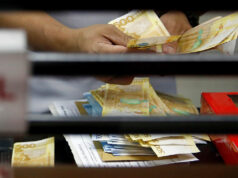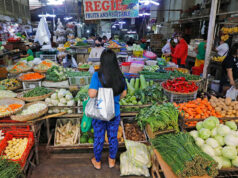Travel firms brace for huge losses
MOST tourism-related businesses in the Philippines expect revenue losses of over 50% this year, amid travel restrictions and business closures due to the coronavirus disease 2019 (COVID-19) pandemic, a survey from PwC Philippines/Isla Lipana & Co. showed.
The survey found that 88% of Philippine tourism businesses expect over 50% revenue losses, while seven percent expect 40-50% in losses and three percent expect 30-40% in losses.
Less than half or 42% of the businesses expect their operations to normalize between six to twelve months, while 21% expect their businesses to normalize after a year.
PwC, in partnership with the Tourism department, surveyed 247 tourism “decision makers” in May 2020, with 70% from tourism services such as travel agencies and tours. Meanwhile, 34% of the respondents are in accommodations, six percent are in food services and entertainment, four percent are in transportation and one percent are in the conferences and events sectors.
The pandemic led businesses to halt or reduce some operations, with 78% saying they stopped offering a product or service due to restrictions and 61% saying they did so due to lack of demand.
Up to 44% of the respondents reduced the level of operations, while 22% deferred their expansion plans.
Tourism employment suffered, with 43% of the respondents reducing employee headcount to save on costs.
A third of the companies experienced productivity loss due to a lack of remote working capabilities, and 29% saw a change in staffing due to low demand while 27% said they laid off staff.
In terms of funding, 14% availed of loans or funds from external sources, while seven percent used company properties for other purposes to generate revenues. Three percent availed of loans or funds from existing shareholders.
Assessing the additional funding they need to normalize their operations after the lockdown, 31% said they need P500,000 to P1 million, while 30% said they need less than P500,000. Just 17% said they need P1 million to P5 million and nine percent said they need none at all.
But some companies require significantly more resources, with seven percent saying they need over P20 million and four percent said they need funding between P5 million and P10 million.
Majority or 61% of the businesses said they will use the funding for working capital requirements, and 54% said they will use it for marketing purposes. Another 41% said they will use it to refinance existing obligations, while 33% said they need the money to improve company facilities and 32% said they will use it to rehire employees.
Up to 79% said they expect international tourist arrivals to decline by over 50% for the year.
Almost all or 92% of the respondents believe that pandemics should be part of insurance coverage.
Tourism Secretary Bernadette Romulo-Puyat said that the department plans to sustain the tourism industry through financial support and policies covered in their Tourism Response and Recovery Program.
“We are working towards the establishment of proper infrastructure, and enhanced health and sanitation protocols in line with the standards of New Normal. Our goal is to build a more sustainable, resilient, and inclusive tourism industry,” she said.
PwC Philippines Chairman and Senior Partner Alexander B. Cabrera said the industry should upskill employees and digitalize operations.
“Promoting medical tourism and agri-tourism may be among the programs that our country can prioritize to help restart the sector,” he said.
The United Nations Conference on Trade and Development (UNCTAD) said the country stands to lose up to $22.64 billion or seven percent of GDP if the tourism standstill extends to 12 months.
Last year, tourism contributed 12.7% to the country’s GDP and employed 5.7 million people.
Foreign arrivals declined 68% from January to June 2020. Tourism Undersecretary Benito C. Bengzon, Jr. in a mobile message on July 2 said the department has not yet come up with revised targets for the year.
He said the department had waived participation fees for international tourism fairs and facilitated wage subsidy programs, as well as crafted a recovery plan for the industry. — Jenina P. Ibañez



